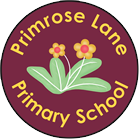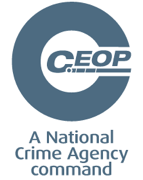
Curriculum
The Primrose Lane Curriculum
Our curriculum
At Primrose Lane, our ambitious curriculum is based on the Early Years framework in Nursery and Reception and the National Curriculum for Key Stages 1 and 2. We aim to provide a curriculum that is engaging, balanced and rigorous. While emphasis is placed on children learning the core skills of English and maths, we place great value on developing the ‘whole child’ and providing an engaging programme of study for all the curriculum areas.
Introduction
We want Primrose Lane to be a happy and healthy place to learn, and we want everyone to be the best they can be. This core aim permeates our school and ethos, whether in the classroom or around and about school. It is also forms part of the intent we have for our curriculum.
Our Primrose Lane Curriculum is all the planned activities that we as a school organise in order to promote learning, personal growth and development. It includes, not only the formal requirements of the National Curriculum, but also the various visits and experiences we organise in order to enrich the children’s learning. It also includes the ‘wider’ curriculum – what the children learn from the way they are treated and expected to behave. Through our Primrose Lane Curriculum we aim to teach children how to grow into positive, responsible young people, who can work and co-operate with others, whilst developing knowledge, skills and attitudes to learning, in order that they achieve well.
The Primrose Lane Curriculum Statement
The document below sets out in detail our curriculum intent and how we implement it. It describes our curriculum and age-related expectations for Early Years (Nursery and Reception, Key Stage 1 (Years 1 and 2) and Key Stage 2 (Years 3, 4, 5 and 6).
In our Curriculum Statement, we set out a comprehensive series of age-related expectations (AREs). These expectations are what teachers need to teach and what children are expected to learn, both for the core subjects (English, Maths and Science) and the foundation subjects. The expectations are based very closely on the National Curriculum.
Our curriculum
At Primrose Lane, our ambitious curriculum is based on the Early Years framework in Nursery and Reception and the National Curriculum for Key Stages 1 and 2. We aim to provide a curriculum that is engaging, balanced and rigorous. While emphasis is placed on children learning the core skills of English and maths, we place great value on developing the ‘whole child’ and providing an engaging programme of study for all the curriculum areas.
Introduction
We want Primrose Lane to be a happy and healthy place to learn, and we want everyone to be the best they can be. This core aim permeates our school and ethos, whether in the classroom or around and about school. It is also forms part of the intent we have for our curriculum.
Our Primrose Lane Curriculum is all the planned activities that we as a school organise in order to promote learning, personal growth and development. It includes, not only the formal requirements of the National Curriculum, but also the various visits and experiences we organise in order to enrich the children’s learning. It also includes the ‘wider’ curriculum – what the children learn from the way they are treated and expected to behave. Through our Primrose Lane Curriculum we aim to teach children how to grow into positive, responsible young people, who can work and co-operate with others, whilst developing knowledge, skills and attitudes to learning, in order that they achieve well.
The Primrose Lane Curriculum Statement
The document below sets out in detail our curriculum intent and how we implement it. It describes our curriculum and age-related expectations for Early Years (Nursery and Reception, Key Stage 1 (Years 1 and 2) and Key Stage 2 (Years 3, 4, 5 and 6).
In our Curriculum Statement, we set out a comprehensive series of age-related expectations (AREs). These expectations are what teachers need to teach and what children are expected to learn, both for the core subjects (English, Maths and Science) and the foundation subjects. The expectations are based very closely on the National Curriculum.
Further information and detail
Other documents relate to one specific aspect of our curriculum. These complement the full Curriculum Statement: they set out our intent and outline key aspects for implementation in detail, and include age-related expectations.
(Please note - as these are working documents please contact the headteacher for the latest versions)
Other documents relate to one specific aspect of our curriculum. These complement the full Curriculum Statement: they set out our intent and outline key aspects for implementation in detail, and include age-related expectations.
(Please note - as these are working documents please contact the headteacher for the latest versions)
A two-year cycle of topics
To meet the requirements of the National Curriculum, all classes in Key Stage 1 and 2 follow some set, pre-planned topics. At Primrose Lane, we make sure children learn lots of additional skills, knowledge and understanding, too. For example, we offer a range of after-school clubs and opportunities to learn a musical instrument or try a new sport – these extra-curricular activities go beyond the statutory requirements. (Encourage your child to join in!) Current local, national or international events can also provide a great basis for learning.
At Primrose Lane teachers work in four different phases to plan and deliver the curriculum: Nursery and Reception, Years 1 and 2, Years 3 and 4 and Years 5 and 6. There are various benefits of this, which include:
An advantage of a two-year cycle is that children learn some age-related expectations in one year and then secure their learning in the following year – an opportunity to reinforce, to provide for even greater ‘mastery’ of the learning; and an opportunity to go deeper with the learning, to use and apply their learning in more situations.
The two-year overview of topics can be found on page 11 of our Curriculum Statement.
To meet the requirements of the National Curriculum, all classes in Key Stage 1 and 2 follow some set, pre-planned topics. At Primrose Lane, we make sure children learn lots of additional skills, knowledge and understanding, too. For example, we offer a range of after-school clubs and opportunities to learn a musical instrument or try a new sport – these extra-curricular activities go beyond the statutory requirements. (Encourage your child to join in!) Current local, national or international events can also provide a great basis for learning.
At Primrose Lane teachers work in four different phases to plan and deliver the curriculum: Nursery and Reception, Years 1 and 2, Years 3 and 4 and Years 5 and 6. There are various benefits of this, which include:
- teachers can share ideas and skills when planning and delivering topics
- teachers can provide different areas of subject expertise
- a common topic creates a talking point or ‘buzz’ for conversations in school
- classes might swap teachers or combine to work with other children
- there are economies of scale when organising visits out or visitors into school
An advantage of a two-year cycle is that children learn some age-related expectations in one year and then secure their learning in the following year – an opportunity to reinforce, to provide for even greater ‘mastery’ of the learning; and an opportunity to go deeper with the learning, to use and apply their learning in more situations.
The two-year overview of topics can be found on page 11 of our Curriculum Statement.
Other subjects
The following subject documents relate to other aspects of our curriculum. As with the ones above, these also complement the full Curriculum Statement: they set out our intent and outline key aspects for implementation in detail, and include age-related expectations.
(Please note - as these are working documents please contact the headteacher for the latest versions)
The following subject documents relate to other aspects of our curriculum. As with the ones above, these also complement the full Curriculum Statement: they set out our intent and outline key aspects for implementation in detail, and include age-related expectations.
(Please note - as these are working documents please contact the headteacher for the latest versions)

